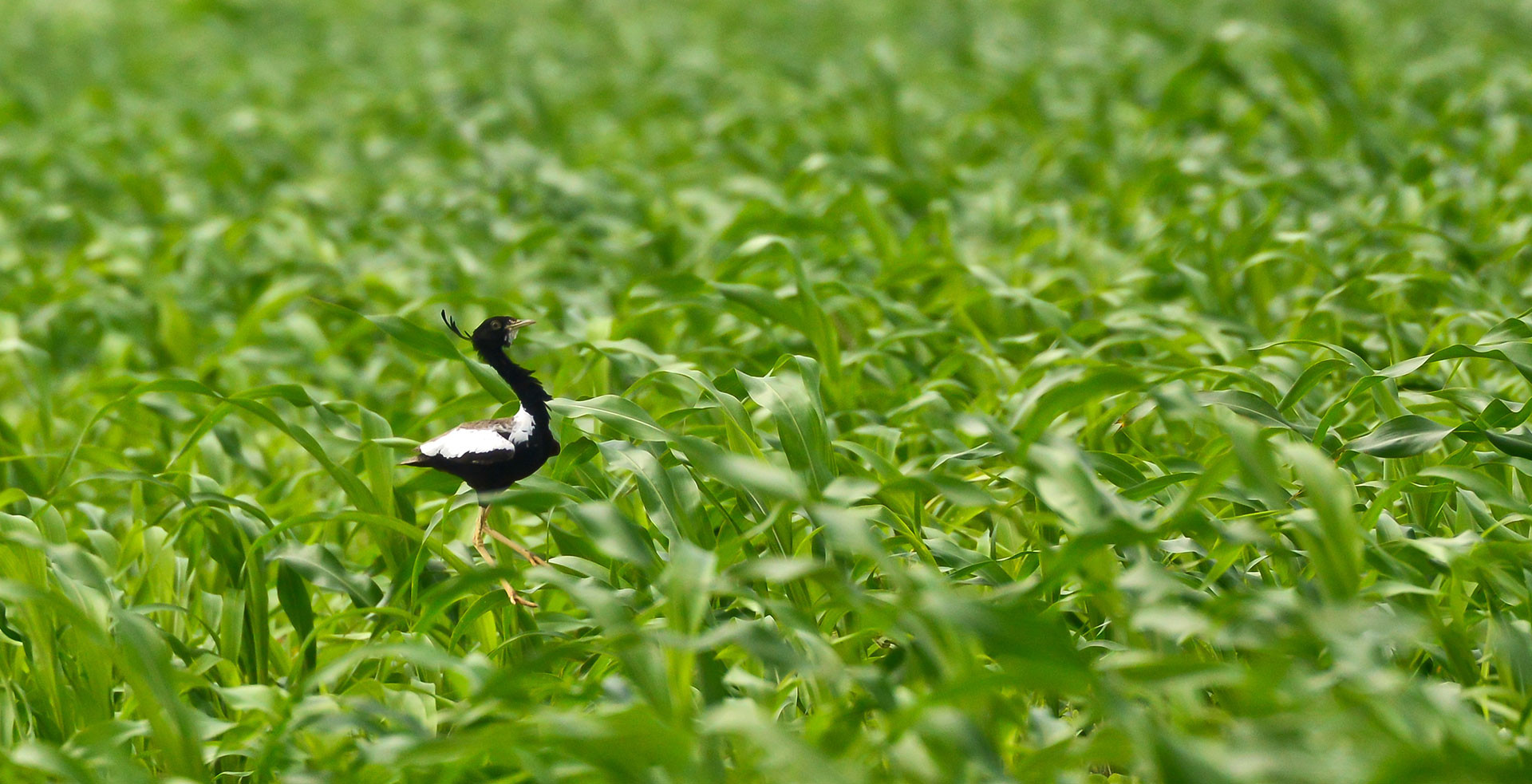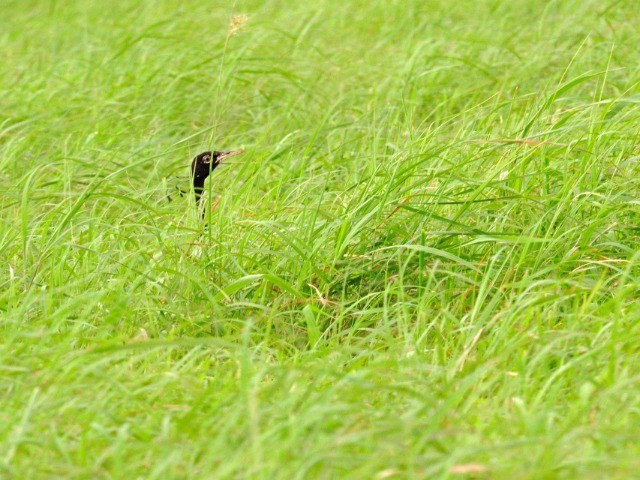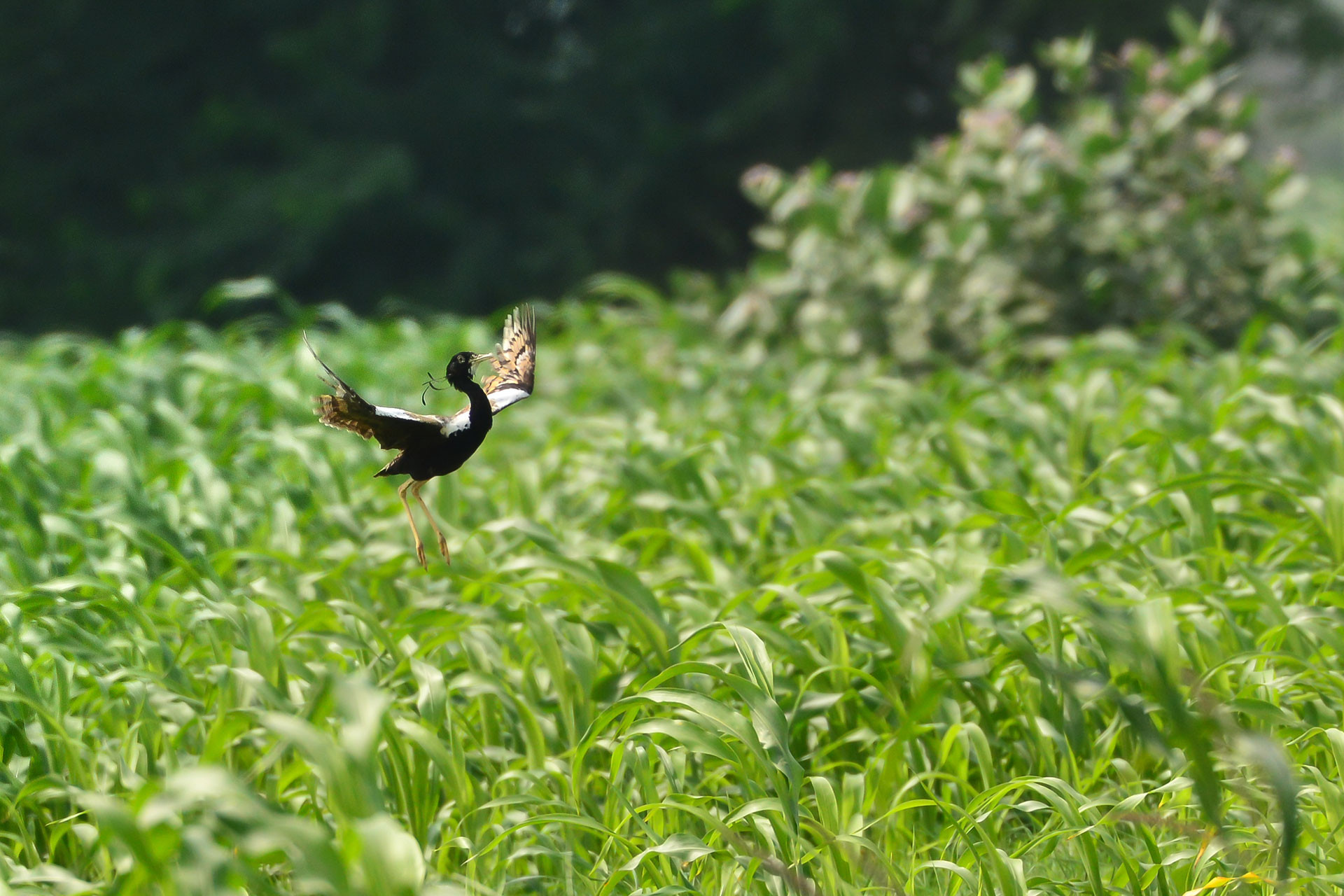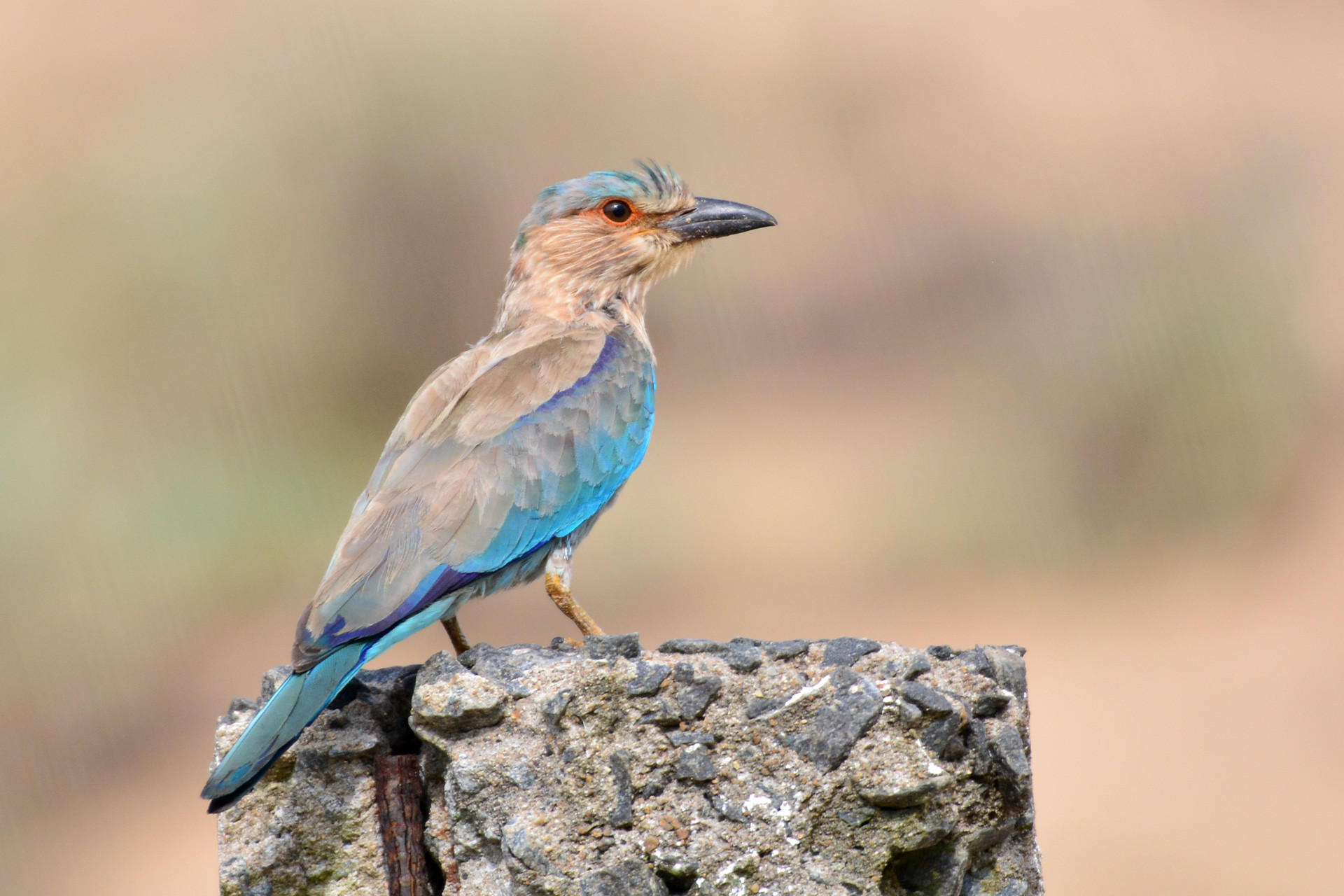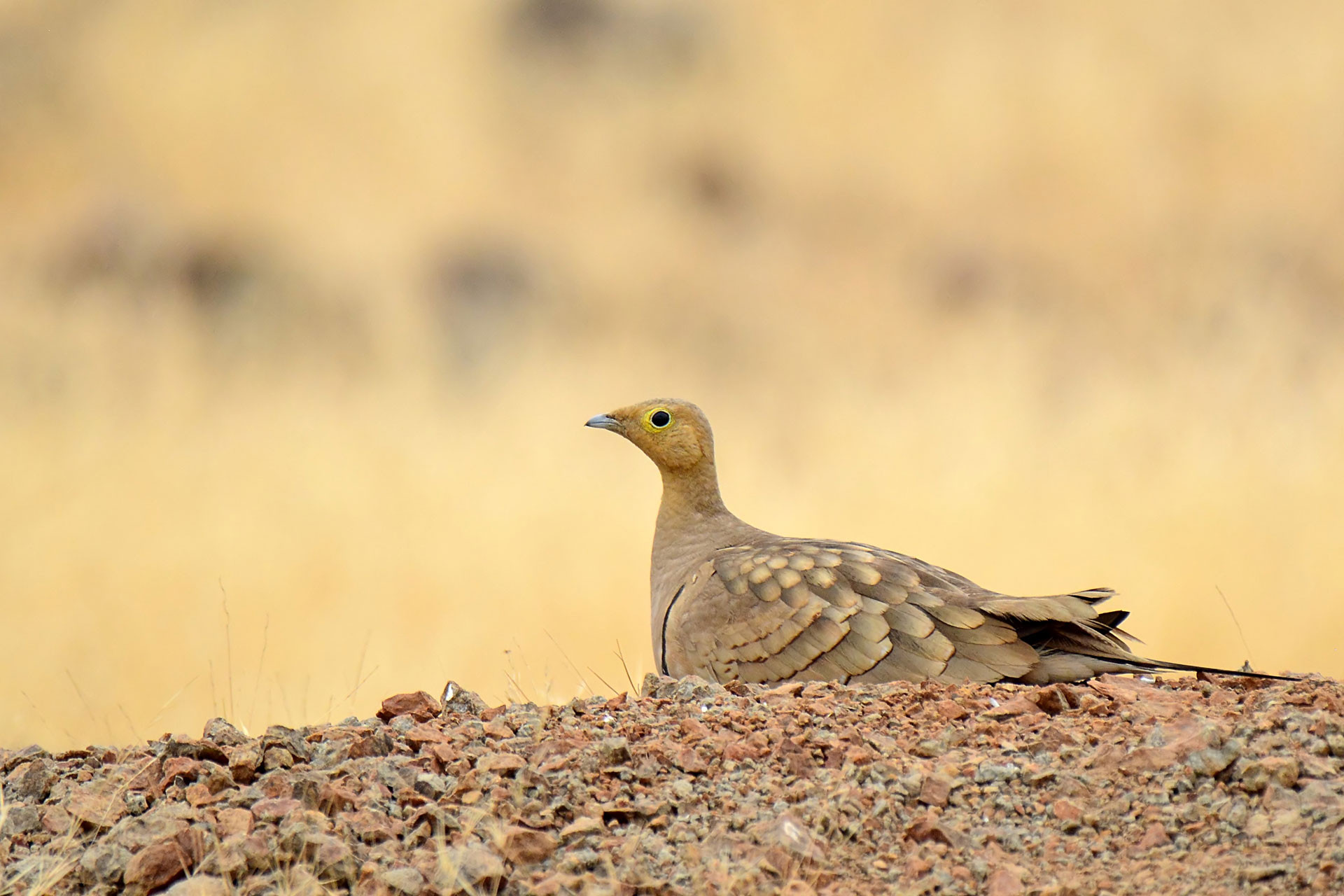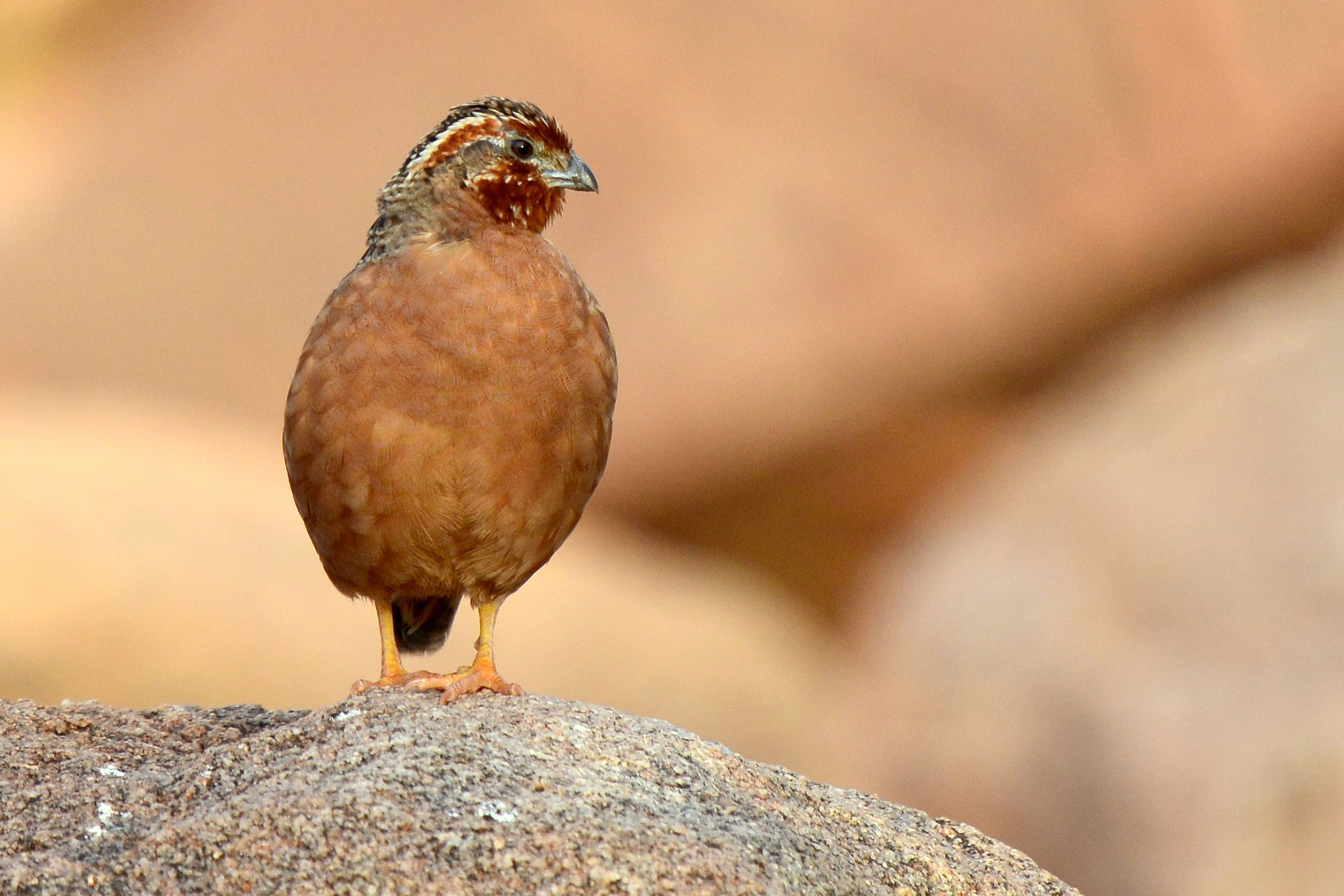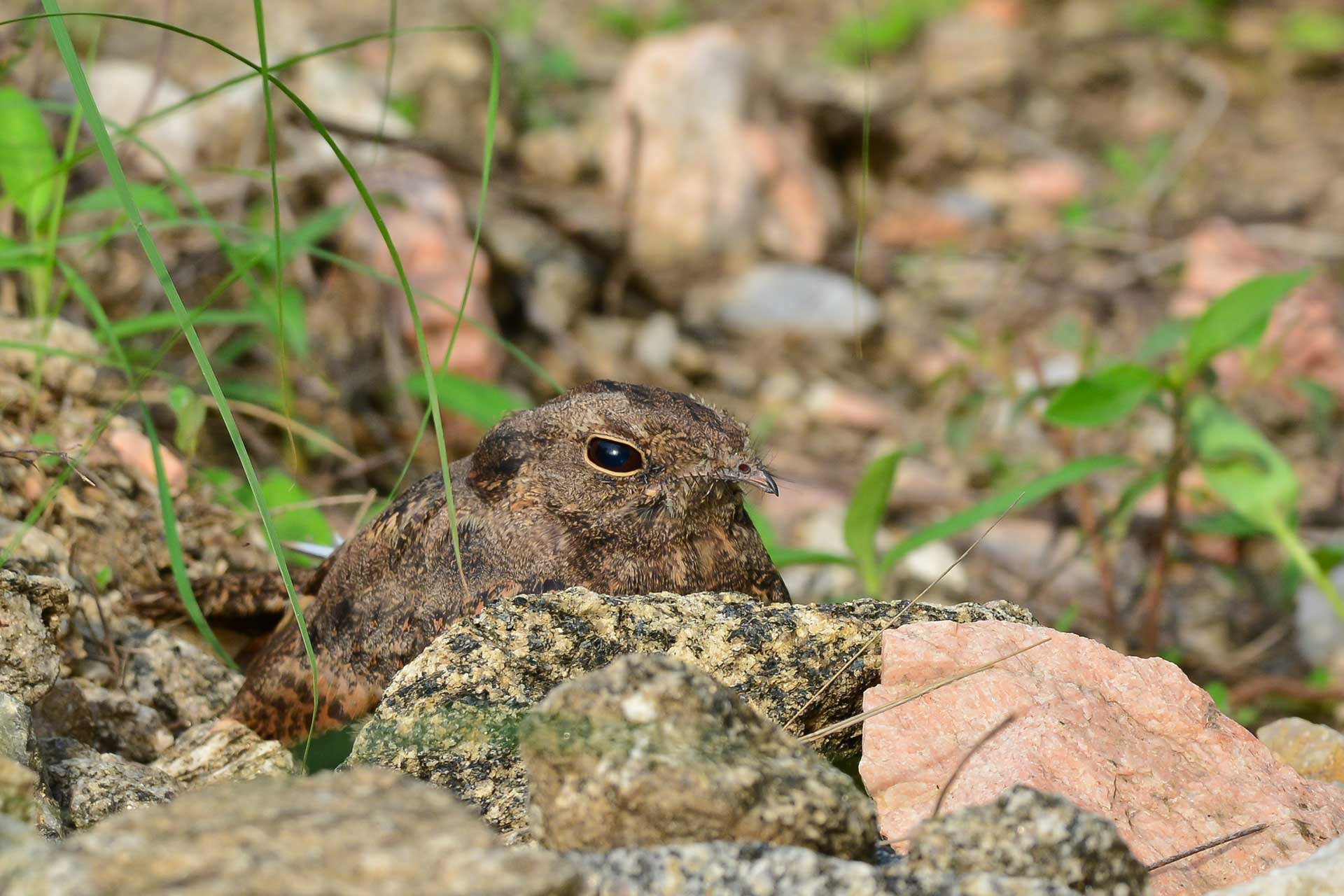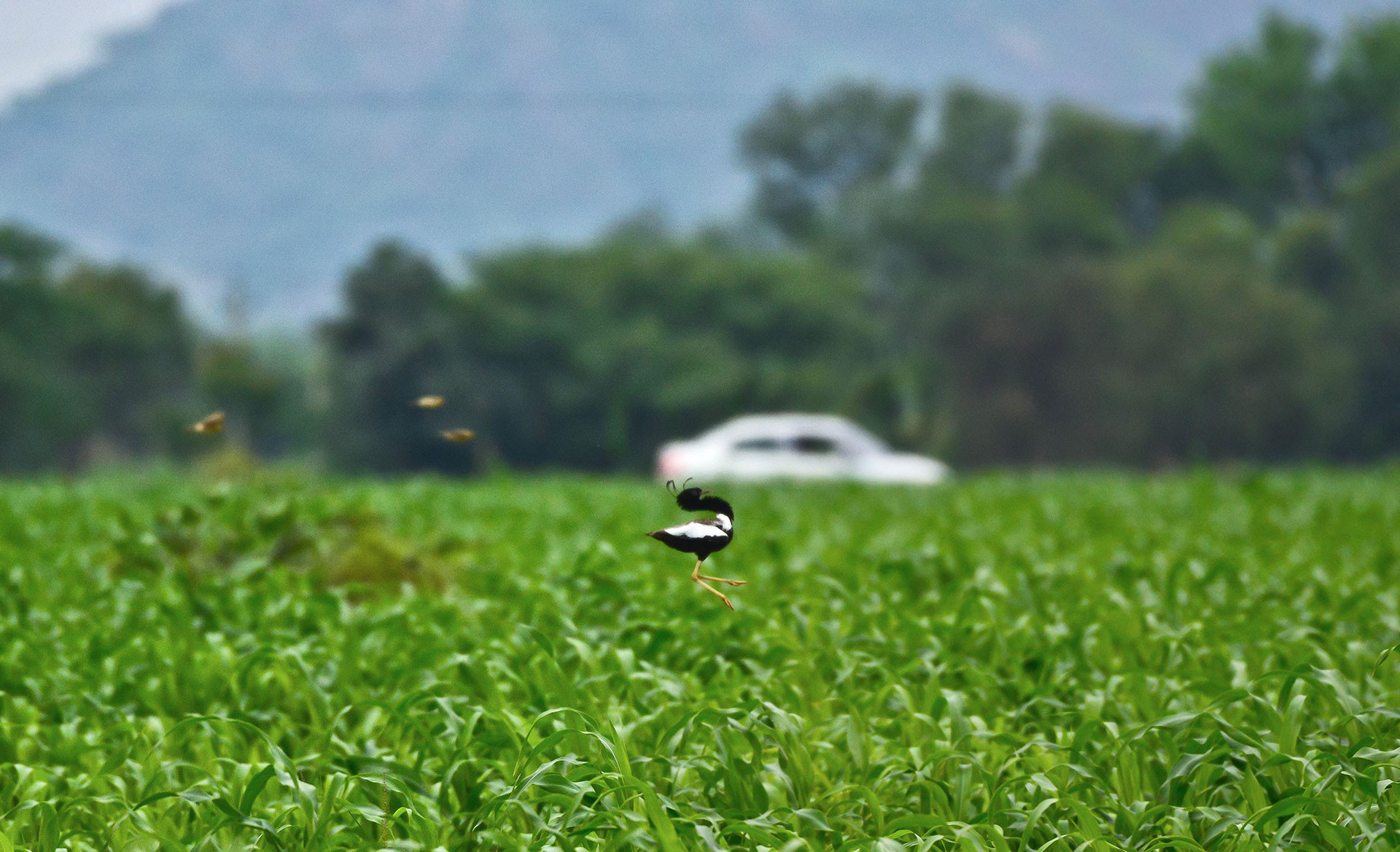The Lesser Florican (Sypheotides indicus) or Kharmor (which means ‘grass peacock’ in Hindi) is the smallest of India’s three resident bustards and is in danger of going locally extinct. Once found in abundance, this endemic bustard has today vanished from much of its historical ranges due to hunting and the rapid obliteration of grasslands.
July and August are the primary breeding months for the Lesser Florican. Their migration from non-breeding to breeding areas is largely influenced by the southwest monsoon. Good monsoonal rainfall is generally followed by a high influx of these birds into their breeding grounds. At present, breeding grounds of the Lesser Florican are limited to a few areas in Gujarat, southeastern Rajasthan, northwestern Maharashtra, and western Madhya Pradesh.
The smallest Indian bustard species is protected under Schedule 1 of the Wildlife Protection Act, 1972. In 2009, the Ministry of Environment, Forest and Climate Change (MoEFCC) declared the Lesser Florican as one of the priority species for recovery. Despite this, between 2000 to 2018, the population of the Lesser Florican declined by almost 80 per cent, making it one of the most endangered birds in India. The Lesser Florican has since slipped from Endangered to the Critically Endangered category on the IUCN Red List. At present, hardly 730 mature Lesser Floricans remain in the country.
An Unlikely Breeding Ground
Shokaliya, situated in the Ajmer district of Rajasthan, is an unprotected agro-pastoral land that has emerged as one of the strongholds for breeding Lesser Floricans. Originally, breeding and non-breeding habitats of Lesser Floricans were semi-arid grasslands (large-canopied trees are not desirable in a Lesser Florican habitat). But in Shokaliya, grasslands are rapidly dwindling in the face of expanding agricultural activities, mining, and overgrazing. Due to these changing land-use patterns, Lesser Floricans have started adapting to the cropland ecosystem and are learning to coexist alongside the farming community.
Every year, with the advent of the summer monsoon, the Shokaliya landscape becomes abuzz with spectacular aerial breeding displays and croak-like calls of male Lesser Floricans. Wildlife researchers, conservationists, bird watchers, and wildlife photographers from all across the country flock here to witness the breeding of these endangered avians.
In the absence of grasslands, Lesser Floricans prefer croplands that are dry underfoot and are not dense enough to make walking difficult, populated by crops that stand at 50 to 100cm in height. During the Kharif season (crops that are usually sown at the beginning of the first monsoon rains), farmers of Shokaliya prefer to grow a mosaic of traditional crops like millet, moong, and urad. These crops with amenable heights help the florican to forage on insects and also scan the landscape for predators and mating partners.
Millet is a taller crop than moong, but in their early crop stage millet plants look similar to grass. After arriving from their non-breeding sites, Lesser Floricans first take shelter in these millet fields. As the season progresses, millet plants become taller, and Lesser Floricans shift to the adjacent moong fields. Once the height of the standing crop crosses 30cm, one can locate male floricans only when they jump above the tall crops as a part of their mating display to attract potential mates. All other activities remain hidden from the observer. At the peak of the breeding season, on a cloudy day with frequent drizzles, a male florican makes around 400 to 500 jumps. On the other hand, female birds are rarely seen because of their secretive and wandering habits.
After the withdrawal of the southwest monsoon in October, crop harvesting begins in earnest in Shokaliya, and the Lesser Floricans begin their return to non-breeding grounds. It is assumed that post-breeding most of the birds from Rajasthan, Gujarat and Madhya Pradesh migrate to peninsular India. But the movement of Lesser Floricans during the non-breeding period is yet to be clearly understood and there is a genuine lack of research. Satellite-based tracking mechanisms are now being used by the Wildlife Institute of India (WII) to acquire information about Lesser Florican migration to non-breeding areas.
Apart from the Lesser Florican, Shokaliya harbours a variety of grassland birds like Savanna Nightjar, Rain Quail, Jungle Bush-Quail, Grey Francolin, Indian Eagle-Owl, Indian Roller, European Roller (passage migrant), Paddyfield Pipit, Pied Cuckoo, Eurasian Collared-Dove, Indian Silverbill, Indian Peafowl, Laughing Dove, Chestnut-bellied Sandgrouse, shrikes, bushlarks and more.
Survival is Dependent on Local Support
Local communities play a pivotal role in the conservation of any species. Without the support of the local community, the relentless efforts of conservationists and forest officials may end in waste. Despite having two sanctuaries for the Lesser Florican in Madhya Pradesh, the population is consistently declining due to public antagonism towards Lesser Florican conservation in unprotected areas like Shokaliya. Hunting, the widespread use of chemical fertilisers and pesticides, disturbances due to overgrazing and unethical photography, and the trampling of eggs from farming activities are also contributing factors.
The future survival of this critically endangered species in this human-dominated environment will largely depend on generating awareness within the local community. The Rajasthan forest department together with BNHS is planning to develop Lesser Florican Community Conserved Areas (LFCCAs) in Shokaliya. Under this initiative, the conservation of the Lesser Florican will be linked with the livelihood improvements of local farming communities and reduce public antagonism towards Lesser Florican conservation.
In the past, Shokaliya used to be a well-known habitat for the Great Indian Bustard (GIB). During the 1990s, there were around 55 GIBs in Shokaliya. In 2016, their population had reduced to four, and after that, no confirmed sightings have been seen in the area. Hopefully, the Lesser Florican aka Kharmor won't have the same fate as the GIB, and Shokaliya will remain a stronghold for this rare avian.

